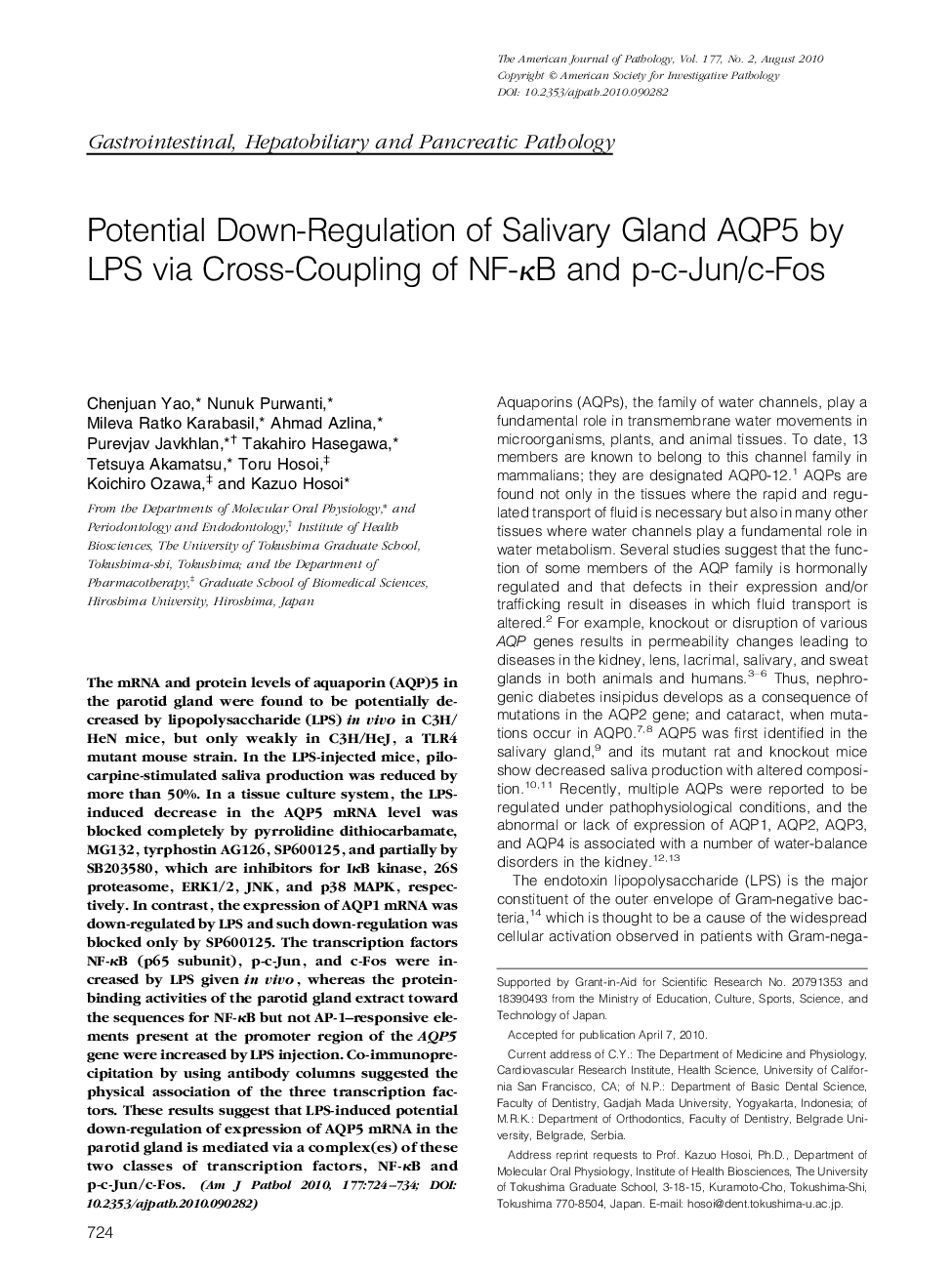| Article ID | Journal | Published Year | Pages | File Type |
|---|---|---|---|---|
| 5934947 | The American Journal of Pathology | 2010 | 11 Pages |
The mRNA and protein levels of aquaporin (AQP)5 in the parotid gland were found to be potentially decreased by lipopolysaccharide (LPS) in vivo in C3H/HeN mice, but only weakly in C3H/HeJ, a TLR4 mutant mouse strain. In the LPS-injected mice, pilocarpine-stimulated saliva production was reduced by more than 50%. In a tissue culture system, the LPS-induced decrease in the AQP5 mRNA level was blocked completely by pyrrolidine dithiocarbamate, MG132, tyrphostin AG126, SP600125, and partially by SB203580, which are inhibitors for IκB kinase, 26S proteasome, ERK1/2, JNK, and p38 MAPK, respectively. In contrast, the expression of AQP1 mRNA was down-regulated by LPS and such down-regulation was blocked only by SP600125. The transcription factors NF-κB (p65 subunit), p-c-Jun, and c-Fos were increased by LPS given in vivo, whereas the protein-binding activities of the parotid gland extract toward the sequences for NF-κB but not AP-1-responsive elements present at the promoter region of the AQP5 gene were increased by LPS injection. Co-immunoprecipitation by using antibody columns suggested the physical association of the three transcription factors. These results suggest that LPS-induced potential down-regulation of expression of AQP5 mRNA in the parotid gland is mediated via a complex(es) of these two classes of transcription factors, NF-κB and p-c-Jun/c-Fos.
